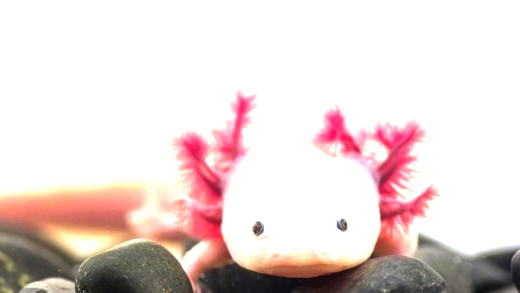Gulf corvina is a unique fish found in the Gulf of California, known for its loud spawning chorus. This phenomenon involves vocalizations during mating, influenced by environmental factors like water temperature and habitat quality. The chorus plays a crucial role in the ecosystem, attracting other species and indicating environmental health. However, threats such as overfishing, habitat degradation, climate change, and noise pollution pose risks to their populations, highlighting the need for conservation efforts.
What is Gulf Corvina?: Understanding the species and its habitat.
Gulf corvina is a unique fish species found in the warm waters of the Gulf of California. This fish is easily recognizable due to its distinctive silvery body and elongated shape. Gulf corvina typically inhabits shallow coastal areas, particularly near estuaries and river mouths where nutrient-rich waters support their feeding habits. They thrive in sandy and rocky substrates, making these areas prime locations for both spawning and foraging.
During the spawning season, which usually occurs in late spring to early summer, Gulf corvina congregate in large schools. This behavior is not just for reproduction; it’s also crucial for maintaining their population levels. The combination of environmental factors, like water temperature and salinity, significantly influences their spawning activities. The Gulf corvina’s preference for specific habitats highlights the importance of preserving these environments for their survival.
The Spawning Chorus: Why is it so loud?
The Gulf corvina spawning chorus is renowned for its loudness, a phenomenon that has intrigued marine biologists and casual observers alike. This vocalization primarily occurs during mating rituals when males produce a series of grunts and croaks to attract females. The intensity and volume of these sounds can reach remarkable levels, sometimes audible above water.
Several factors contribute to the loudness of the Gulf corvina’s sounds. Firstly, the anatomy of their swim bladder, which acts as a resonance chamber, amplifies the sounds they produce. Secondly, the social structure of Gulf corvina schools during spawning encourages this vocal behavior, as more fish vocalizing together creates a louder chorus. The loudness serves multiple purposes: it helps females locate males and can deter potential predators during this vulnerable time.
How Do Fish Make Sounds?: The science behind sound production in fish.
Fish, including Gulf corvina, produce sounds through various mechanisms. The primary method involves the use of their swim bladders, which can vibrate to create noise. In Gulf corvina, the sound production is primarily achieved through a series of rapid contractions of muscles surrounding the swim bladder. This process is similar to how a drum produces sound when struck.
In addition to the swim bladder, some fish also use their pharyngeal teeth and other body parts to create sound. The Gulf corvina sound production showcases an evolutionary adaptation that enhances communication during critical life stages, such as spawning. Understanding these mechanisms provides insight into the complex behaviors of fish and their interactions within the ecosystem.
Purpose of the Sounds: What do they achieve during spawning?
The Gulf corvina spawning chorus serves several critical purposes during the reproductive process. Firstly, the sounds produced by the males attract females, signaling their readiness to mate. This auditory communication is essential in murky waters where visibility is limited. The loudness of their calls helps females locate potential mates from a distance.
Secondly, these vocalizations can deter predators. When Gulf corvina gather in large schools, their collective sounds create a confusing cacophony that can mask individual fish from predators. This behavior is a survival strategy, ensuring that more fish can successfully spawn without falling prey to lurking threats.
Lastly, the sounds may play a role in synchronizing the spawning activities of the school. By vocalizing in unison, Gulf corvina may be able to coordinate their timing, maximizing the chances of successful fertilization. Understanding these roles sheds light on the intricate behaviors of Gulf corvina during their critical reproductive phase.
Comparing Fish Sounds: How does Gulf Corvina’s chorus stack up?
When comparing the loudness of the Gulf corvina’s sounds to other fish species, it stands out significantly. The Gulf corvina can produce sounds reaching up to 100 decibels, which is comparable to the noise level of a chainsaw! This remarkable loudness is not commonly found in other fish species.
For instance, while some fish like the croaker or the drum also produce sounds during spawning, their calls are generally less intense. The Gulf corvina’s unique anatomy, particularly its swim bladder, allows it to amplify sounds more effectively than many of its counterparts.
- Gulf Corvina: Up to 100 dB
- Croaker: Approximately 70 dB
- Drum: Around 80 dB
This significant difference in loudness not only helps Gulf corvina attract mates but also contributes to their overall survival strategy by making their presence known in a competitive ecosystem.
Scientific Studies: What research has been done?
Research on the Gulf corvina sounds has gained traction in recent years, focusing on various aspects of their vocalizations. Studies have aimed to understand the mechanics of sound production, the ecological impacts of their spawning calls, and the effects of environmental changes on these sounds.
One notable study conducted by marine biologists highlighted how Gulf corvina’s vocalizations are influenced by water temperature and salinity. The findings indicated that warmer waters tend to enhance sound production, potentially affecting spawning success.
Another research effort focused on the role of sound in communication among Gulf corvina. This study revealed that fish in densely populated schools produced louder calls, suggesting a correlation between school size and vocal intensity. Such research is crucial for understanding how environmental factors impact the Gulf corvina population and their reproductive success.
Environmental Factors: How do they affect the chorus?
The Gulf corvina spawning chorus is significantly affected by various environmental factors. These include water temperature, salinity, and habitat conditions, all of which play a critical role in sound production during spawning.
1. **Water Temperature**: Warmer waters often enhance sound production in fish, including Gulf corvina. Studies indicate that optimal temperatures can lead to increased vocalization, aiding in mating success.
2. **Salinity Levels**: Salinity also influences sound production. Changes in salinity can affect the physiology of Gulf corvina, impacting their ability to produce sounds effectively.
3. **Habitat Quality**: The health of the marine environment, including the presence of nutrients and the condition of the substrate, directly affects Gulf corvina populations. Healthy ecosystems support larger schools, which contribute to a louder chorus.
4. **Noise Pollution**: Increasing human activity in the Gulf of California, such as shipping and tourism, introduces noise pollution that can interfere with the natural spawning chorus. This external noise can mask the sounds of Gulf corvina, making it harder for them to communicate effectively.
Understanding these environmental influences is crucial for conservation efforts aimed at protecting Gulf corvina populations and ensuring their spawning success.
Ecosystem Impact: The role of the chorus in the Gulf’s ecosystem.
The Gulf corvina spawning chorus plays an essential role in the Gulf of California’s ecosystem. This loud vocalization not only facilitates mating but also contributes to the ecological dynamics of the region.
1. **Attracting Other Species**: The sounds produced during spawning can attract not only potential mates but also other marine species, creating a dynamic interaction within the ecosystem.
2. **Ecosystem Indicators**: The health and behavior of Gulf corvina can serve as indicators of the overall health of the Gulf’s ecosystem. A robust spawning chorus often signals a thriving environment, while declines may indicate ecological stress.
3. **Nutrient Cycling**: The congregation of Gulf corvina during spawning can enhance nutrient cycling in the marine environment, supporting other marine life.
4. **Biodiversity**: By maintaining a stable population through effective spawning, Gulf corvina contribute to the biodiversity of the Gulf of California, supporting a range of species that depend on this unique habitat.
In summary, the Gulf corvina spawning chorus is more than just a mating call; it is a vital component of the Gulf’s ecological framework, influencing interactions among species and the health of the marine environment.
Threats to Gulf Corvina: What could disrupt their spawning?
Despite their ecological significance, Gulf corvina face numerous threats that could disrupt their spawning behaviors and overall population health. Identifying these threats is crucial for conservation efforts.
1. **Overfishing**: Unsustainable fishing practices have led to significant declines in Gulf corvina populations. Overfishing not only reduces their numbers but also impacts their reproductive success.
2. **Habitat Degradation**: Coastal development and pollution have degraded the shallow habitats where Gulf corvina spawn. Loss of habitat quality can hinder their spawning activities.
3. **Climate Change**: Changes in ocean temperature and acidity due to climate change can adversely affect Gulf corvina’s spawning behaviors and the health of their ecosystems.
4. **Noise Pollution**: As previously mentioned, increased human activity leads to noise pollution, disrupting the natural sounds that Gulf corvina rely on for communication during spawning.
Addressing these threats is essential for the conservation of Gulf corvina populations. By implementing sustainable fishing practices and protecting their habitats, we can help ensure the future of this remarkable species and the rich ecosystem of the Gulf of California.





Comments are closed.